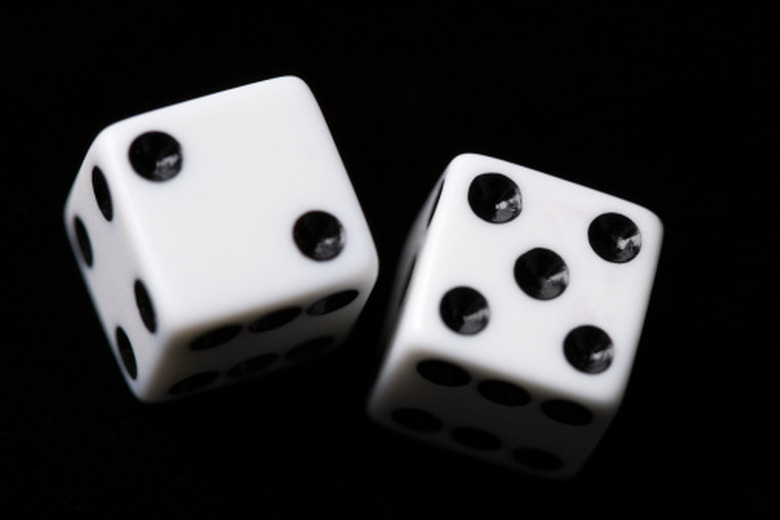The Law Of Probability
Probability measures the likelihood of an event occurring. Expressed mathematically, probability equals the number of ways a specified event can occur, divided by the total number of all possible event occurrences. For example, if you have a bag containing three marbles — one blue marble and two green marbles — the probability of grabbing a blue marble sight unseen is 1/3. There is one possible outcome where the blue marble is selected, but three total possible trial outcomes — blue, green, and green. Using the same math the probability of grabbing a green marble is 2/3.
Law of Large Numbers
Law of Large Numbers
You can discover the unknown probability of an event through experimentation. Using the previous example, say you do not know the probability of drawing a certain colored marble, but you know there are three marbles in the bag. You perform a trial and draw a green marble. You perform another trial and draw another green marble. At this point you might claim the bag contains only green marbles, but based on two trials, your prediction is not reliable. It is possible the bag contains only green marbles or it could be the other two are red and you selected the only green marble sequentially. If you perform the same trial 100 times you will probably discover you select a green marble around 66% percent of the time. This frequency mirrors the correct probability more accurately than your first experiment. This is the law of large numbers: the greater the number of trials, the more accurately the frequency of an event's outcome will mirror its actual probability.
Law of Subtraction
Law of Subtraction
Probability can only range from values 0 to 1. A probability of 0 means there are no possible outcomes for that event. In our previous example, the probability of drawing a red marble is zero. A probability of 1 means the event will occur in each and every trial. The probability of drawing either a green marble or a blue marble is 1. There are no other possible outcomes. In the bag containing one blue marble and two green ones, the probability of drawing a green marble is 2/3. This is an acceptable number because 2/3 is greater than 0, but less than 1–within the range of acceptable probability values. Knowing this, you can apply the law of subtraction, which states if you know the probability of an event, you can accurately state the probability of that event not occurring. Knowing the probability of drawing a green marble is 2/3, you can subtract that value from 1 and correctly determine the probability of not drawing a green marble: 1/3.
Law of Multiplication
Law of Multiplication
If you want to find the probability of two events occurring in sequential trials, use the law of multiplication. For example, instead of the previous three-marbled bag, say there is a five-marbled bag. There is one blue marble, two green marbles, and two yellow marbles. If you want to find the probability of drawing a blue marble and a green marble, in either order (and without returning the first marble to the bag), find the probability of drawing a blue marble and the probability of drawing a green marble. The probability of drawing a blue marble from the bag of five marbles is 1/5. The probability of drawing a green marble from the remaining set is 2/4, or 1/2. Correctly applying the law of multiplication involves multiplying the two probabilities, 1/5 and 1/2, for a probability of 1/10. This expresses the likelihood of the two events occurring together.
Law of Addition
Law of Addition
Applying what you know about the law of multiplication, you can determine the probability of only one of two events occurring. The law of addition states the probability of one out of two events occurring is equal to the sum of the probabilities of each event occurring individually, minus the probability of both events occurring. In the five-marbled bag, say you want to know the probability of drawing either a blue marble or a green marble. Add the probability of drawing a blue marble (1/5) to the probability of drawing a green marble (2/5). The sum is 3/5. In the previous example expressing the law of multiplication, we found the probability of drawing both a blue and green marble is 1/10. Subtract this from the sum of 3/5 (or 6/10 for easier subtraction) for a final probability of 1/2.
Cite This Article
MLA
Farkas, Andrea. "The Law Of Probability" sciencing.com, https://www.sciencing.com/law-probability-8657085/. 24 April 2017.
APA
Farkas, Andrea. (2017, April 24). The Law Of Probability. sciencing.com. Retrieved from https://www.sciencing.com/law-probability-8657085/
Chicago
Farkas, Andrea. The Law Of Probability last modified March 24, 2022. https://www.sciencing.com/law-probability-8657085/
